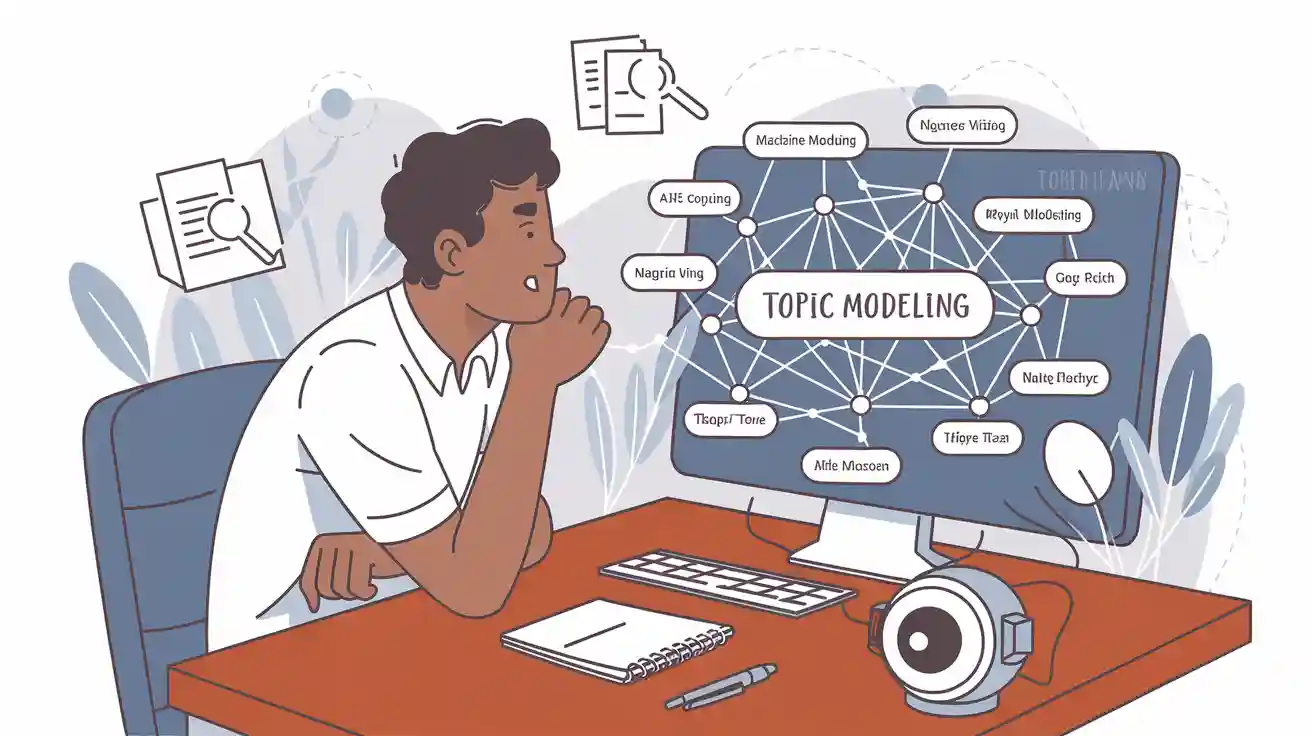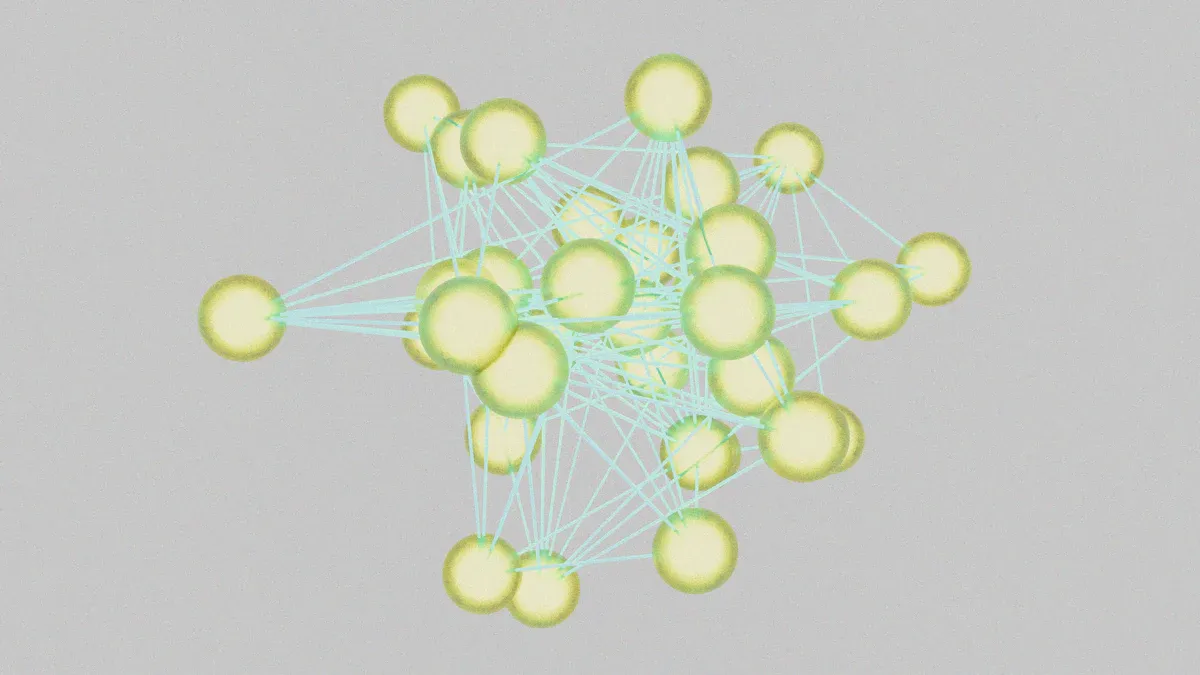
Topic modeling helps computers find patterns or themes in large sets of data. At first, topic modeling worked best with words and text. Today, it also works with images and visual data. The Topic Modeling machine vision system uses these methods to help machines understand what they see. Many people use topic modeling to organize, search, and group pictures.
Beginners need no special skills to start learning topic modeling. Anyone can follow simple steps and see real results.
Key Takeaways
- Topic modeling helps computers find hidden patterns in text and images without needing labeled data.
- Machine vision uses topic modeling to group and understand images, improving detection and security tasks.
- Beginners can start topic modeling by preparing image data, choosing a model like LDA, and checking results carefully.
- Different tools like BERTopic, LDA, and neural topic models work best for different datasets and goals.
- Reviewing model results with accuracy checks and human judgment ensures useful and clear topic groups.
Topic Modeling Basics
What Is Topic Modeling?
Topic modeling is a way for computers to find hidden themes or patterns in large sets of data. At first, researchers used topic modeling to study text. They wanted to see what topics appeared in books, articles, or websites. Today, topic modeling also helps machines understand images and other types of information. This approach does not need labeled data. Instead, it learns by looking for patterns in how words or features appear together. People use topic modeling to organize, search, and group information in many fields.
How It Works
Topic modeling works by scanning a collection of text or images and looking for groups of words or features that often appear together. The computer then creates topics based on these patterns. Each topic is a group of words or features that share a common theme. For example, one topic might include words like "cat," "dog," and "pet." Another topic might have "car," "bus," and "train." The computer can show how much each topic appears in each document or image.
Researchers use different topic modeling techniques, such as Latent Dirichlet Allocation (LDA) and Probabilistic Latent Semantic Analysis (pLSA). These methods help the computer decide which topics fit the data best.
Key Terms
- Topic modeling: An unsupervised learning method that finds topics in data by looking at word or feature patterns.
- Text corpus: A large collection of text used for analysis.
- Document-term matrix: A table that shows how often each word appears in each document.
- Latent Dirichlet Allocation (LDA): A popular topic modeling technique that assumes each document contains a mix of topics.
- Coherence metrics: Numbers like NPMI and CV that help measure how well the topics make sense to humans.
- Diversity and similarity metrics: Tools that check if topics are different from each other or overlap too much.
- Human judgment: Experts often review topics to see if they make sense, balancing numbers with real understanding.
| Success Metric | What It Measures | Why It Matters |
|---|---|---|
| Topic Coherence | How well topic words fit together | Helps pick clear, useful topics |
| Reconstruction Error | How well the model fits the data | Shows if the model is accurate |
| Human Judgment | If topics make sense to people | Ensures topics are easy to understand |
Topic Modeling Machine Vision System

From Text to Images
Topic modeling machine vision system methods started with text but now work with images. Researchers saw that patterns in words could also appear in pictures. They created new ways to find these patterns in visual data.
- Topic modeling now groups images by shared features, not just words.
- Concept modeling uses both images and text together.
- The Concept package clusters grouped images and text into "concepts" instead of only "topics."
This shift shows that topic modeling machine vision system tools can handle large amounts of data from different sources. Machine learning-powered systems use these ideas to improve detection and learning in vision tasks.
Why Use Topic Modeling in Vision
Topic modeling machine vision system tools help with detection and security. They do not need labeled data, so they learn from images without extra work. Machine learning-powered topic detection finds hidden patterns in pictures. This helps with phishing detection and other security problems.
The visual Structural Topic Model (vSTM) shows high levels of accuracy in detection. When tested with different numbers of topics, evaluators found that topic detection worked better than random guessing. Models with more topics gave a high level of confidence in detection. This means that topic modeling machine vision system methods can reach high levels of accuracy and confidence scoring in real-world detection tasks.
Real-World Uses
Many applications use topic modeling machine vision system methods. Security teams use them for phishing detection and threat hunts. They scan large amounts of data to find grouped images and text that may show phishing or other threats.
Security experts trust topic modeling machine vision system tools for detection efficacy and a high level of confidence in results.
These systems help with learning, detection, and security in many fields. They support high level of confidence in detection, making them useful for security and other applications.
Techniques and Tools
Neural Topic Models
Neural topic models use deep learning to find patterns in data. These models learn from both text and images. They can spot complex visual patterns that older methods might miss. Neural topic models often use neural networks to group images by shared features. For example, a neural topic model can look at thousands of photos and find groups based on color, shape, or objects. This helps machines understand what is inside each image. Neural topic models work well with large datasets and can handle many types of visual data.
BERTopic and Others
BERTopic is a modern tool for topic modeling. It uses transformer models to find topics in text and images. BERTopic can group images by their content, even if the images look very different. Other tools, like Latent Semantic Indexing (LSI) and Correlated Topic Model (CTM), also help with topic modeling. Each tool has strengths and weaknesses. For example, LSI works fast and gives stable results, but it may not always find the most diverse topics. CTM can find more complex patterns but may need more computing power.
Many researchers use more than one tool to get better results. This approach is called an ensemble method.
Choosing Tools
Selecting the right tool for topic modeling depends on the dataset and the task. No single model works best for every situation. For example, LDA and LSI perform well on the CAMDA dataset, while LSI and CTM do better on the WOS dataset. The table below shows how different models perform on different datasets:
| Dataset | Top Performing Models | Observations |
|---|---|---|
| CAMDA | LDA, LSI | LDA and LSI outperform others; topics often overlap |
| WOS | LSI, CTM | LSI and CTM perform best; results vary by dataset |
Researchers also look at criteria like quality, interpretability, and efficiency. Some models, like LSI, show high stability but lower diversity. Others, like neural topic models, may offer better coherence on some datasets.
The best choice often comes from testing several models and picking the one that fits the data and goals.
Topic Modeling on Images

Data Preparation
Data preparation is the first step in topic modeling on images. Each image must be ready for analysis. People often start by collecting a set of images for the project. They may use photos from a camera, a public dataset, or screenshots from a security system. Each image should have a clear label or filename.
Next, the images need to be converted into a format that a computer can understand. This process is called feature extraction. A common method uses a pre-trained neural network, such as ResNet or VGG, to turn each image into a list of numbers. These numbers represent the important features of the image, like shapes, colors, or objects.
Tip: Keep all images the same size and format. This helps the model compare them more easily.
After feature extraction, people create a matrix where each row stands for an image and each column stands for a feature. This matrix is similar to the document-term matrix used in text topic modeling. The matrix is now ready for the next step.
Running the Model
Once the data is prepared, the next step is to run the topic modeling algorithm. Many people use Latent Dirichlet Allocation (LDA) or neural topic models for this task. These models treat each image as a document and each feature as a word.
Here is a simple walkthrough for running topic modeling on images:
-
Choose a topic modeling algorithm
LDA works well for beginners. Neural topic models can find more complex patterns but may need more computing power. -
Set the number of topics
Decide how many topics the model should find. This number is often called "k." People may try different values to see which works best. -
Train the model
Use the feature matrix as input. The model will group images into topics based on shared features. -
Check the results
The model will assign each image to one or more topics. Each topic will have a list of features that describe it.
# Example: Running LDA on image features using Python
from sklearn.decomposition import LatentDirichletAllocation
lda = LatentDirichletAllocation(n_components=5)
topics = lda.fit_transform(feature_matrix)
Note: Some algorithms, like sampling-based LDA, may give different results each time. Running the model several times helps find the best solution.
Interpreting Results
After running the model, people need to interpret the results. Each topic represents a group of images with similar features. For example, one topic might include images of cars, while another shows animals. This process helps with detection, classification, and security tasks.
People use several metrics to check how well the model works:
- Accuracy against external ground truth labels gives the most reliable measure of performance. If labels are available, comparing model results to these labels shows how well the model detects real topics.
- Internal cluster validity metrics, such as coherence and perplexity, help assess the structure of topics. Perplexity, especially in sampling-based LDA, often matches well with accuracy when many topics exist.
- Coherence measures are popular but do not always match true accuracy. People should not rely on them alone.
- Some algorithms, like NMF, do not have strong internal metrics. Manual review of topics is important in these cases.
- When ground truth labels are missing, people should look at the topics and decide if they make sense.
Repeated runs and careful review help find the best model for detection and classification. In security, high accuracy and confidence are important for real-world use.
A simple example project might use topic modeling on images from a wildlife camera. The model could group images into topics like "deer," "fox," and "empty forest." This helps with automatic detection and classification, saving time for researchers and improving security in protected areas.
Topic modeling gives machines the power to find patterns in images. This guide showed how anyone can start with simple steps.
- Try different tools and datasets to see what works best.
- Join online groups to learn from others and share ideas.
Anyone can use topic modeling in machine vision. Curiosity and practice help build new skills.
FAQ
What is the main goal of topic modeling in machine vision?
Topic modeling helps computers find patterns in images. It groups similar pictures together. This makes it easier for people to search, organize, and understand large collections of images.
Can topic modeling work without labeled data?
Yes. Topic modeling uses unsupervised learning. The model finds patterns by itself. People do not need to label each image before starting.
Which tools help beginners start with topic modeling on images?
Beginners often use tools like BERTopic, LDA, or neural topic models. Python libraries such as scikit-learn and PyTorch also support these methods.
How do people know if the topics make sense?
People check topics using accuracy, coherence, and human review. Sometimes, experts look at grouped images to see if they fit together. Good topics should show clear and useful patterns.
See Also
Understanding The Fundamentals Of Computer And Machine Vision
Complete Overview Of Machine Vision For Industrial Automation
A Deep Dive Into Synthetic Data Usage In Machine Vision
Introduction To Metrology And Its Role In Machine Vision
Essential Insights About Computer Vision And Machine Vision Technologies








